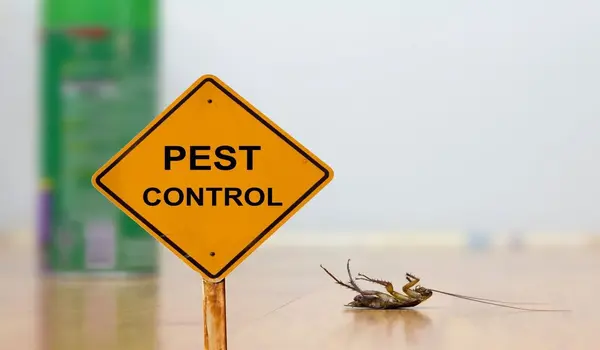Pest control is a crucial aspect of farming, as pests can significantly damage crops and reduce yields. However, the use of chemical pesticides can have negative consequences for the environment, human health, and beneficial insects. As a result, many farmers are turning to alternative, non-chemical methods to control pests while maintaining healthy crops. In this blog, we will explore the most effective ways to control pests without relying on chemical pesticides, focusing on sustainable practices that promote long-term agricultural health.
1. Biological Pest Control: Nature’s Solution
Biological pest control involves using natural predators, parasites, or pathogens to control pest populations. By introducing these beneficial organisms into the farming ecosystem, farmers can naturally reduce the number of harmful pests without chemicals. For example, ladybugs feed on aphids, while parasitic wasps target and lay eggs in caterpillars, preventing them from damaging crops.
This method is highly effective because it creates a balanced ecosystem where pests are controlled by their natural enemies. Unlike chemical pesticides, biological control does not harm non-target species or beneficial insects, making it a sustainable option for long-term pest management. Many farmers integrate bio-based products such as bio-pesticides or microbial solutions to enhance the effectiveness of natural predators, ensuring a healthy and thriving farm environment. Such products, like those available through BulkAgroChem, can support biological control by promoting the health of the soil and plants, making crops more resistant to pests.
2. Crop Rotation: Disrupting Pest Life Cycles
Crop rotation is a simple yet highly effective method to control pests without chemicals. By changing the crops planted in a specific field each season, farmers can disrupt the life cycles of pests that rely on a particular crop. For example, if a pest population builds up in a field of corn, rotating to a legume or another crop can starve the pests and reduce their numbers.
In addition to pest control, crop rotation improves soil fertility and reduces the buildup of crop-specific diseases. The diversity of crops helps prevent pests from establishing a permanent presence in the field, leading to healthier plants and fewer infestations. To further boost the effectiveness of crop rotation, farmers often use organic fertilizers or soil conditioners that replenish nutrients and improve soil structure, ensuring crops have a strong defense against pests.
3. Companion Planting: Natural Pest Deterrents
Companion planting involves growing certain plants together to enhance their growth and protect against pests. Some plants naturally repel pests with their strong scents or chemical compounds, while others attract beneficial insects that prey on harmful pests. For example, marigolds are known to repel nematodes, while planting basil alongside tomatoes can help deter aphids.
By carefully selecting plant combinations, farmers can create a natural pest management system that reduces the need for chemical inputs. Companion planting also promotes biodiversity, which leads to a more resilient farming ecosystem. In addition to repelling pests, companion plants can improve soil health, fix nitrogen, and attract pollinators, leading to better crop yields. The use of bio-fertilizers and organic amendments further enhances companion planting by ensuring that both primary and companion crops receive the nutrients they need for optimal growth.
4. Physical Barriers: Keeping Pests Away
Physical barriers are an effective way to protect crops from pests without using chemicals. These barriers include row covers, netting, and fences that physically block pests from reaching the plants. Row covers, for example, can protect young plants from insects, birds, and small animals while still allowing sunlight and moisture to reach the plants.
By creating a physical separation between crops and pests, farmers can prevent damage without harming the environment. Physical barriers are particularly useful in organic farming, where chemical pesticides are not an option. Farmers can combine physical barriers with natural soil conditioners or organic mulches to create an additional layer of protection, making it harder for pests to establish themselves in the field.
5. Traps and Baits: Targeting Specific Pests
Traps and baits are a targeted way to control specific pests without chemicals. These methods involve attracting pests to a designated area where they can be trapped and removed. For example, pheromone traps use chemical signals to lure insects like moths into a trap, while bait stations attract rodents or other pests.
Traps and baits allow farmers to focus on controlling specific pest populations without affecting non-target species or beneficial insects. This method is particularly effective when dealing with localized pest outbreaks. To enhance the effectiveness of trapping, farmers can use pest monitoring systems or pheromone-based products that target specific pests, reducing their numbers while maintaining a healthy farm ecosystem.
6. Cultural Practices: Preventing Pest Infestations
Cultural practices refer to farming techniques that minimize the risk of pest infestations by creating an environment that is less favorable for pests. These practices include proper sanitation, timely planting, and maintaining healthy soil. For example, removing crop residues and weeds can eliminate potential hiding places for pests, reducing their ability to reproduce and spread.
By promoting healthy plant growth through practices such as regular crop monitoring and appropriate planting schedules, farmers can reduce the likelihood of pest infestations. Healthy plants are naturally more resistant to pests, and maintaining proper soil health through organic fertilizers or soil amendments can further reduce the risk of pest damage. Products that improve soil health, such as those offered by BulkAgroChem, can play a significant role in creating an environment that supports strong, pest-resistant plants.
7. Integrated Pest Management (IPM): A Holistic Approach
Integrated Pest Management (IPM) is a comprehensive approach to pest control that combines multiple methods, including biological, cultural, mechanical, and physical controls. The goal of IPM is to manage pest populations at acceptable levels while minimizing the use of chemical pesticides. IPM focuses on prevention, monitoring, and the use of non-chemical control methods as the first line of defense.
By integrating various pest control techniques, farmers can create a balanced approach that reduces the need for chemical interventions. IPM encourages regular monitoring of pest populations, so farmers can respond quickly to any changes and take action before pests cause significant damage. Combining IPM with natural pest control products and soil health enhancers, like those available from BulkAgroChem, helps farmers maintain a sustainable, pest-free environment without relying on chemicals.
8. Organic Sprays and Natural Repellents: Eco-Friendly Alternatives
Organic sprays and natural repellents are a chemical-free way to control pests. These products are made from plant extracts, essential oils, or other natural ingredients that deter pests without harming the environment. For example, neem oil is a widely used organic pesticide that disrupts the feeding and reproduction of insects like aphids, whiteflies, and spider mites.
Natural repellents are safe to use and do not harm beneficial insects or pollinators. By using organic sprays in combination with other non-chemical pest control methods, farmers can effectively manage pest populations without resorting to harsh chemical treatments. Some bio-pesticides and microbial solutions enhance plant resistance to pests while being environmentally friendly, offering farmers a natural, sustainable alternative for pest control.
Conclusion
Controlling pests without chemicals is not only possible but also essential for sustainable agriculture. By adopting methods like biological control, crop rotation, companion planting, and physical barriers, farmers can protect their crops from pests while promoting a healthy and balanced farming ecosystem. Traps, baits, and cultural practices also play a crucial role in minimizing pest infestations without harming the environment.
Integrated Pest Management offers a holistic approach that combines various techniques to reduce pest populations and the need for chemical interventions. By incorporating organic sprays and natural repellents, farmers can further ensure that their pest control practices are eco-friendly and sustainable.
Additionally, products designed to enhance soil health, improve water retention, and support plant growth, such as those available from BulkAgroChem, can play a vital role in creating a farming environment that is naturally resistant to pests. By focusing on long-term soil and plant health, farmers can reduce pest pressure and build a more resilient, sustainable agricultural system for future generations.



